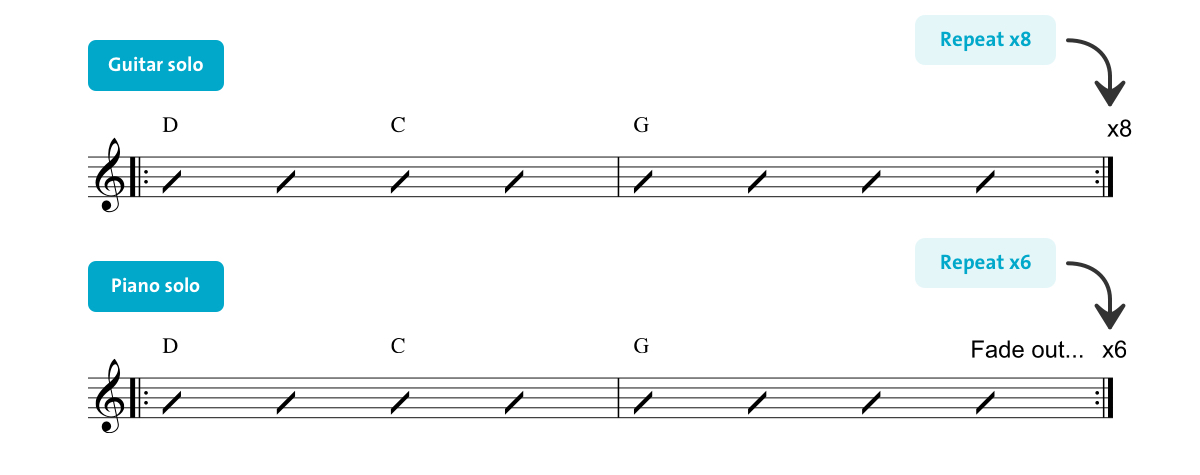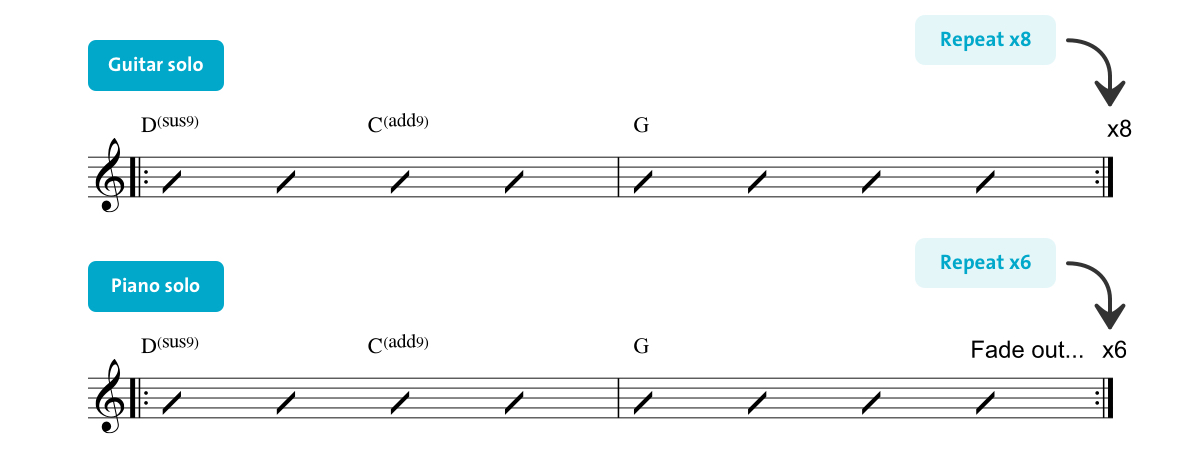Welcome dear guitar players, to another edition of our Songs Explained series. We’ve got a classic for you. “Sweet Home Alabama” by Lynyrd Skynyrd is a very guitar-oriented song and it allows us to practice techniques like syncopated timing, flageolets, basic pentatonic scale theory for solos. Also, if you just want to learn that famous intro, we’ve got you covered. It doesn’t matter if you’re a beginner, an intermediate player or a professional guitarist. Here you’ll find all the chords, lyrics and tabs to help you out.
In this blog:
- Main chord progression D-C-G
- Song structure
- Beginner
- Intermediate & pro
- Music theory: soloing
- What’s the link between Neil Young and Sweet Home Alabama?
Also, check out “Sweet Home Alabama” for piano chords and tabs or read everything there is to know about “Sweet Home Alabama” for ukulele in this article.
“Sweet Home Alabama” for guitar
This blog post is dedicated to explaining all the ins and outs of Lynyrd Skynyrd’s “Sweet Home Alabama” for guitar for different skill levels. Just click on your skill level in the table of contents, and we’ll launch you to the part of the article that is relevant for you. We’ve got the chords, lyrics, the tabs, and all the other tools you need to learn to play this song.
Curious about the music theory behind the track? We’ve got you covered. At the end of this post there’s a special part where we go deeper into the theoretical fundamentals of “Sweet Home Alabama.” Last but not least, we’ll cover the historical background of the song. So, in the end you’ll be able to play this track, explain why Neil Young has been mentioned a couple of times in the lyrics and throw in an extra fun fact that Lynyrd Skynyrd actually aren’t from Alabama. Enjoy!
Song structure
First, let’s take a look at the structure of “Sweet home Alabama.” As you can see in the figure below, the track consists of 14 parts. That may seem like a lot, but we’ve got some good news for you. First, have a look at the Figure below.

Figure 1: Song structure of Sweet Home Alabama
Main chord progression D-C-G
Ready for the good news? Great! This song may seem like it has a lot of parts, but actually the harmonic core of “Sweet Home Alabama” is just a three-chord sequence. “Only three chords?!” you ask. Yup, and these are repeated over and over again. By doing so Lynyrd Skynyrd is laying down a foundation of sound on which other instruments can improvise, solo and create a colorful track. Check out the chord sequence.

Figure 2: Main chord progression Sweet Home Alabama
So, for the intro, interludes, verses and solos, you need only these three chords. The only part where Lynyrd Skynyrd apply harmonic extensions is in the chorus. (Read on to see what we mean by harmonic extension.) From here on we’re splitting this article up into levels: beginner and intermediate/pro.
Beginner
In this part:
- Learn how to sound like this (video)
- Easy guitar chord progression
- Chorus chord progression and strumming
- Chords with lyrics
- Back to top
Hey there! If you’re a beginner who just picked up a guitar or someone who’s been jamming around for a while but just wants to take it slow, you’re at the right place. This is the part where we’re going to walk you through the song “Sweet Home Alabama” by Lynyrd Skynyrd.
Learn how to sound like this (video)
Playing this track will help you master some basic chords, improve your skills and skyrocket your feeling for rhythm. Enough talk!
Easy guitar chord progression
Let’s start with taking a closer look at the following parts of the song: intro, verses, interludes and solos. All these parts have the same chord sequence: D, C, G. The only difference is the amount of times this chord sequence is repeated.
Before we continue check out the chord diagrams below. To help you out with the duration of the song parts we wrote down how many times you have to play each part.

Figure 3: Chord diagrams for D chord, C chord, G chord.
Here is the chord progression for the intro:
Here is the chord progression for the verse:
Here is the chord progression for the interlude:
Here is the chord progression for both guitar and piano solos:
When you see the sequence like this it just feels easy doesn’t it? That’s what we thought.
Chorus chord progression and strumming
Now let’s take a closer look and see how the chorus is built up. It’s still based on our familiar chord sequence, but it has different variations at the end of that sequence.

Figure 8: Chord diagrams for D chord, C chord, G chord, F chord, F (light version).
As you can see, the chorus contains an F chord. And yes, this is a nice opportunity to start exercising your barre skills. If at this moment you have a problem with playing barre chords, don’t worry. We have distilled a light version of the F chord where you only have to barre just 2 strings. Playing this “light version” will improve your barre technique. Later, you can make the next step by playing the whole F shape.
Here is the chord progressions for the chorus:
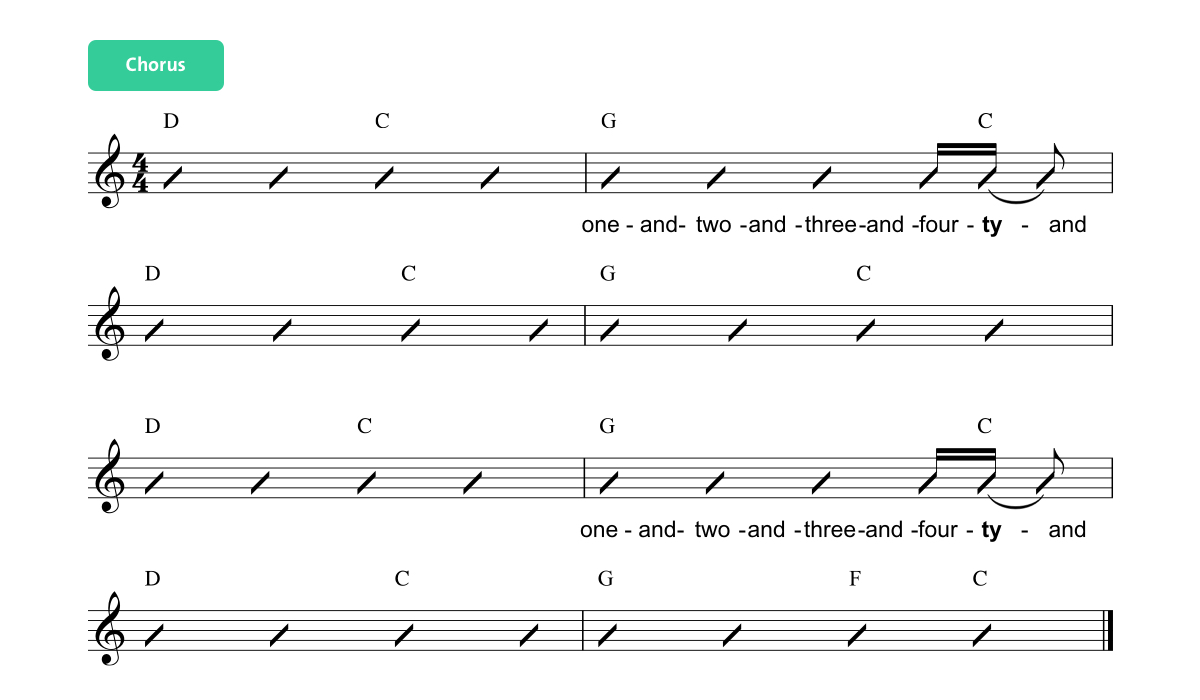
Figure 9: Chord progression chorus Sweet Home Alabama.
Video tutorial beginner chorus:
Take a closer look at the end of first and third lines. Chord C comes at the end of the bar as a syncopated accent on sixteenth note. To help you play this syncopated C at the right spot, we put a metric pulse below. The fourth beat is marked by the word “fourty” instead of “four.” It’s not a typo! This syllable “-ty” will help you to time the C chord correctly. This is a great way of training your sense of rhythm.
Chords with lyrics
Now let’s collect all parts and chords. And add some lyrics, shall we? This means it’s your turn to take over and play the heck out of this track.
Intermediate & pro
In this part:
- Learn how to sound like this (video)
- Advanced guitar chords
- Tablatures and chords for the intro
- Chorus chord progression and strumming
- Chord overview with lyrics
- Back to top
Learn how to sound like this (video)
Hello stranger! Welcome to the advanced level for guitar of the “Sweet Home Alabama” edition of the “Songs Explained” series. The good news is that you’re going to learn a lot from this blog post. We’re going to show you the chords for the song, the tabs for some of the licks, tips and tricks on how you can improvise a solo on top of the chord progression and, last but not least, we’ll provide the lyrics to this classic by Lynyrd Skynyrd. The bad news? None. Well, maybe that we have a lot to work to do, so read on!
Advanced guitar chords
Let’s start with the following parts: intro, verses, interludes and solos. All these parts are based on one sequence: D, C, G. To be more precise: Dsus2, Cadd9, G. The only difference is how many times this chord sequence is repeated. To make it easier, we’ve mapped it out in Figure 4 below. First, though, check out the chord diagrams.

Figure 11: Chord diagrams for D(sus9) chord C(add9) chord, G chord.
Don’t be surprised seeing two shapes for the G chord. The process of choosing a chord shape depends on the musical context, as you can see in our tutorial video.
Here are the chord progressions for the intro:
Here is the chord progression for the verse:
Here is the chord progression for the interlude:
Here is the chord progression for both guitar and piano solos:
Tablatures and chords for the intro
The intro is an important part of this song. It’s very guitar oriented and creates the main sound and vibe of the track. You can’t neglect learning how to play it. So, as usual we will help you to dive head first into this one. Ready? Here are tablatures and chords for the intro.
Video tutorial intro Sweet Home Alabama intermediate/pro:
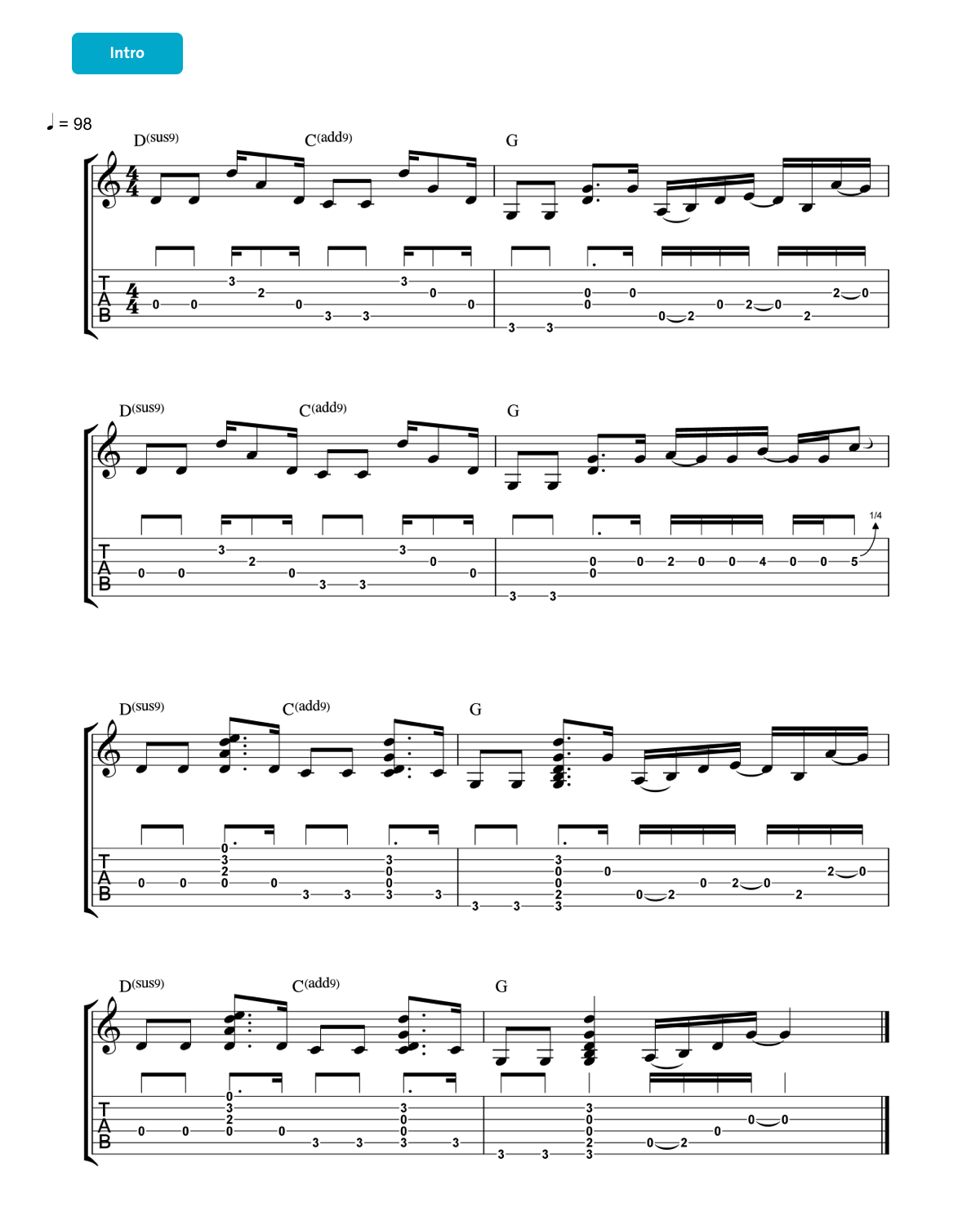
Figure 16: Tabs for the intro of Sweet Home Alabama.
Pay attention to the string bend, played on the third string fifth fret at the end of the second line. By bending the string, you create that typical country sound.
Another very recognizable part of “Sweet Home Alabama” by Lynyrd Skynyrd is the guitar riff you hear during the interludes. The first and the third interlude use the same riff. Consider this an important piece of the puzzle when it comes to mastering this song. Let’s take a closer look.
Video tutorial interlude 1 and 3, verse and chorus:
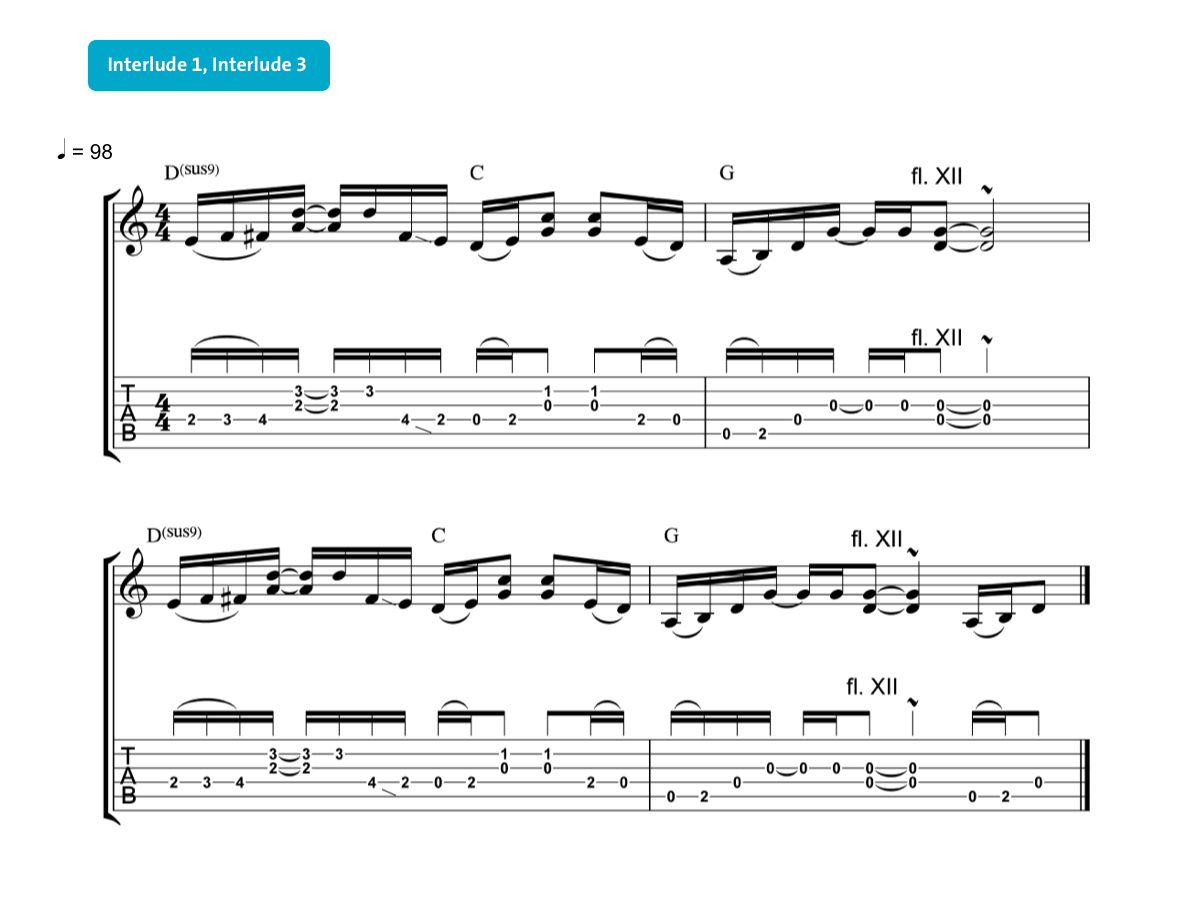
Figure 17: Tabs for the interlude of Sweet Home Alabama.
There is a flageolet at the end of each line. This flageolet is played by open third and fourth strings on the twelfth fret.
Yeah, consider it just a matter of time until the melody flows right out of your fingers. A few times of practicing this riff will do it. Now it’s time to see how the chorus is built up. If you remember, this is the only part where the chord progression is a bit different than the rest of the song. It’s still based on the original chord sequence, but it has different variations at the end.
Chorus chord progression and strumming
Check out the chords of the chorus first and try to get used to them. In the figure below, we’ll show you how these chords are applied in “Sweet Home Alabama.”

Figure 18: Chord diagrams for D chord, C chord, G chord, F chord, F (light version).
Now let’s take a look at the chord progressions for the chorus. We added a little counting part to help you with the rhythm.
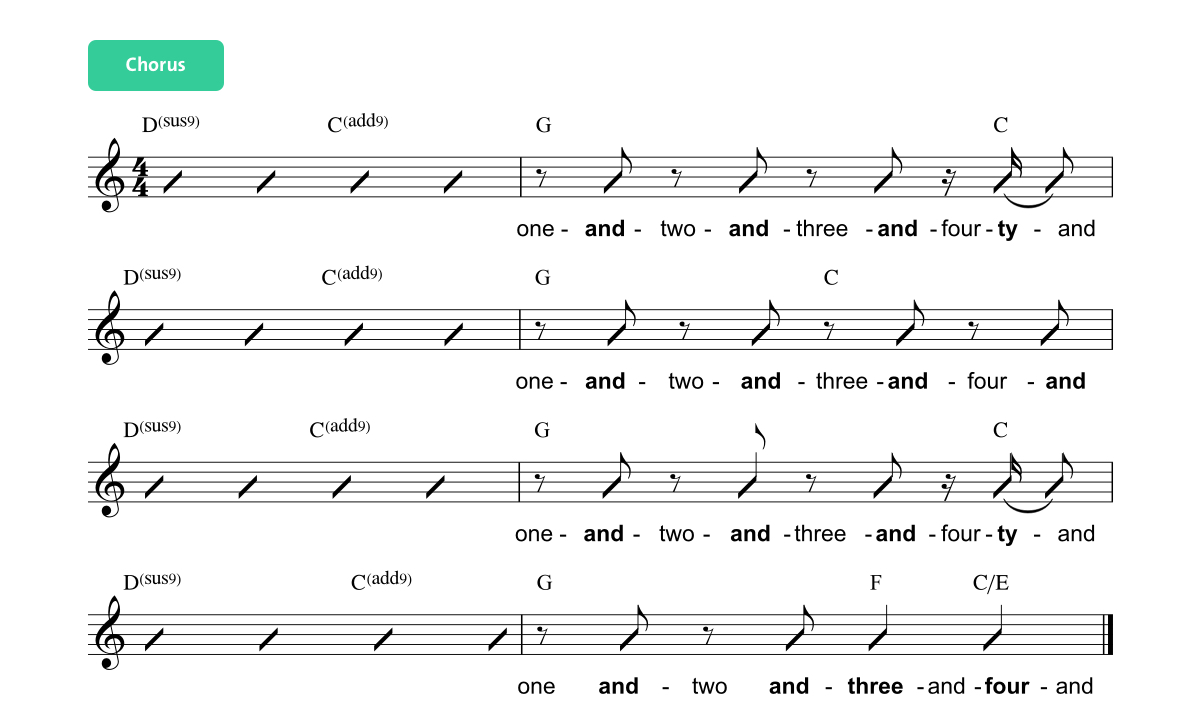
Figure 19: Chorus of Sweet Home Alabama with metric pulse.
We would like to draw your attention to the last bars of each line: The accentuated chords G and C are played in an offbeat. To help you play these chords in the right way, we put a metric pulse below — divided into the metric pulse and offbeat. Metric pulses are “one,” “two,” “three” and “four.”
The offbeat falls between these pulses. Pulse and offbeat reflect eight notes. In other words, for each quarter note we count: “one – and,” “two – and,” “three – and” and so on. Coming back to these last bars of each line, we don’t play the C and G chords on “one” or “two” or “three” or “four” beats. But we play it on the offbeat (“and”), followed after each metric pulse.
Take a closer look at the end of the first and third line. The chord comes at the end of the bar as a syncopated accent on the sixteenth note. To help you play this syncopated C at the right spot we put the word “four – ty” instead of “four” for the fourth beat. It’s not a typo! This syllable “ty” will help you to time that C chord correctly.
Sounds a bit difficult? Don’t worry, just try it, and you’ll feel what we mean.
Chord overview with lyrics
You know what time it is? Yup, it’s time for you to grab your axe and start slaying this track. Check out the whole song with chords and lyrics in Figure 6. Enjoy! Curious about how to solo on the main chord sequence? Great! Just read on, and we’ll explain that too.
Music theory: soloing
Congratulations, if you’re reading this you’ve probably just completed the tutorial to “Sweet Home Alabama” by Lynyrd Skynyrd! This means that you can play the chord progression of the song, and some cool strumming patterns and riffs — depending on your chosen skill level. Sounds great, right? Oh yes, it does. “But you guys promised us solos!” Yup, we did. What if we tell you that by using only one scale, you can create your own solo for this song?
Sounds too good to be true? Maybe… But what if we added that the secret that we’re going to share with you now is something that goes way beyond “Sweet Home Alabama”? Seriously, once you understand this you can literally solo on top of all your favorite recordings! Since you’re here in the music theory paragraph, we’re sure you are hungry for this knowledge. Warning: This is going to make your fingers ache.
We already explained that the harmonic core of this song is a three-chord sequence. This sequence is repeated over and over again. So, by playing the D chord, C chord and G chord, Lynyrd Skynyrd lays down a harmonic highway on which you can drive as fast, slow and free as you want. There’s only one catch though: You need to know where this highway is. We’ll show you.

Figure 21: Main chord progression Sweet Home Alabama.
Both guitar and piano are soloing over these chord changes that we just dubbed the highway. These three chords — D, C, G — belong to the G major family. This means that the G major scale can cover all these chords. So, there you have it, the G major scale is where the highway is at.
First of all, let’s see what the G major scale consist of and now let’s take a look at which notes of each of the chords.
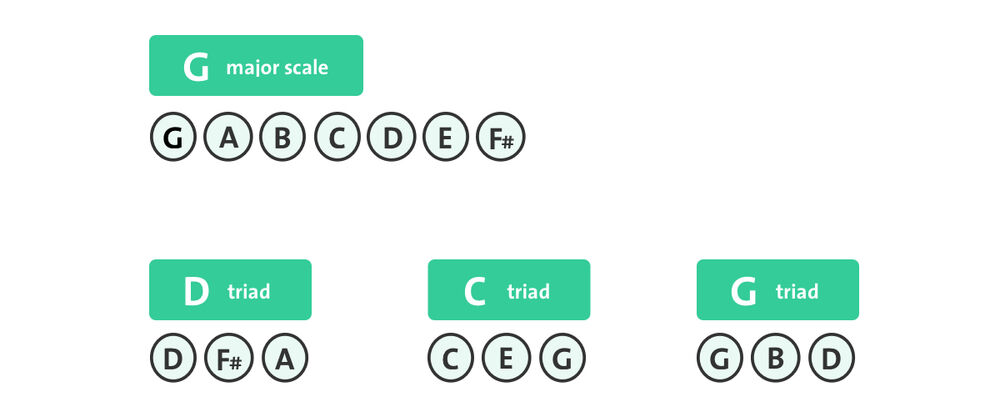
Figure 22: G major, D chord, C chord, G chord.
As you can see, all the notes in the chords are from the G major scale. Here is one way to play the G major scale on the guitar fretboard. The black dots stand for the root note G.

Figure 23: G major scale.
If you want to sound more bluesy, like the guitar on the recording does, then here is another possibility for improvisation. Let’s say this is an alternative highway that you can use and still enjoy the same benefits. We call it the E minor pentatonic. The E minor pentatonic has only 5 notes: E – G – A – B – D. In the figures below, you can see the two most basic ways in which you can play this pentatonic scale on your guitar. To make it even more bluesy, we can add a “blue” note, which is A# (or Bb). This is the E minor pentatonic with “blue” note: E – G – A – A# – B – D. On the pictures below, the black dots stand for the E notes, which are the root notes and the blue dots stand for the “blue” notes.

Figure 24: G major scale and E minor pentatonic.
To sum it up, when improvising over “Sweet Home Alabama” you can use the G major scale and E minor pentatonic scale with the “blue” note. The E minor pentatonic adds a more bluesy sound to your playing, while the G major scale characterizes the main key center of this song. Don’t take our word for it, just try it out!
Oh, and by the way, since the guitar is a transposable instrument, you can use the scale patterns we showed you to play other major or minor pentatonic scales. It all depends on which root note you start, on your fretboard. Choose the right highway, and your solos will sound as free as a bird.
What’s the link between Neil Young and Sweet Home Alabama?
Now, you’re probably thinking: “What does all this have to do with Neil Young?” Since we promised to let you in on a little secret, here it goes. First, let’s start by crushing the myth that the band that wrote “Sweet Home Alabama” is from the Yellowhammer State, because they definitely aren’t. Ed King, Gary Rossington, Ronnie van Zant, Allen Collins, Larry Junstrom and Bob Burns are originally from Jacksonville, Florida. Well, actually, Ed King was from California, but still that’s not Alabama.
The iconic riff for “Sweet Home Alabama” saw the light when the band was recording their second album “Second Helping”. Gary Rossington was playing the fingerpicking part while waiting for everybody to come in for rehearsal. Ronnie van Zant liked it so much that he wanted his bandmate to keep on playing. In the meantime, he wrote the lyrics. Ed King assisted Rossington with finishing the music. The track became the highway to success for Lynyrd Skynyrd.
Southern Man
Yes, yes, we know we still haven’t answered what all this has to do with Neil Young. If all these previous facts aren’t enough to keep the conversation going with a distant uncle during an awkward Thanksgiving dinner, just throw in the fact that Ronnie van Zant refers to Young in the song for his criticism in the tracks “Southern Man” and “Alambama.” Both songs deal with the subject of racism and slavery. The Canadian singer-songwriter definitely had an opinion on the way the Southerners did their business.
Later on, Neil Young would reflect on his old work and say that his words were “accusatory and condescending, not fully thought out, and too easy to misconstrue.” That’s why he can laugh about the verse in which Van Zant points out that the South doesn’t need him around.
Well, I heard Mister Young sing about her
Well, I heard ol’ Neil put her down
Well, I hope Neil Young will remember
A Southern man don’t need him around anyhow
Happy jamming!
By Kirill Dumchenko and Teo Lazarov.




